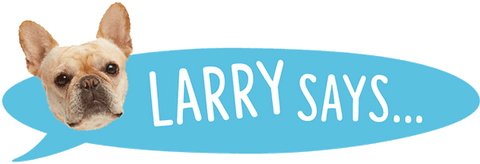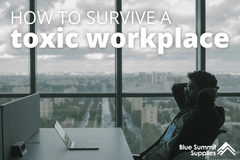Clear, open, and respectful communication is essential to a successful workplace, but it doesn’t happen overnight. While we all communicate differently, at some point, we’ve all wanted to become a better communicator—or, at the very least, we’ve wished the people around us were better communicators. But how do we foster better communication between team members and become more effective communicators ourselves?
In this post, we’re sharing seven strategies for building effective communication in the workplace. These actionable strategies will help you become a better communicator—no matter your industry or current role.
The Importance of Effective Communication at Work
Communication plays a critical role in a team’s effectiveness as well as the success of the business as a whole. Communication affects decision making, productivity, and it can be the difference between a healthy team that enjoys working together versus a workplace fueled by distrust and conflict. Without clear and effective communication, productivity slows, and the business can’t function to the best of its ability.
The Benefits of Effective Team Communication
- Avoid confusion and misunderstanding in the workplace.
- Prevent conflicts and passive aggressive behavior.
- Build trust across team members, management, and business departments.
- Improve company motivation and productivity.
- Establish a positive company culture.
- Create a desirable work environment that attracts top talent.
- Retain talent who truly enjoy working with their colleagues.
- Facilitate clear and effective decision making.
-
Ensure every team member is accountable to themselves, their team, and the business.
Better Communication in the Workplace

1. Consider Preferred Communication Styles
We all communicate differently. What works for some may not work for others. Completely unintentionally, these different communication preferences can cause tension between coworkers. For instance, you may have an assertive, bold personality and prefer to be direct and efficient with your communication; you don’t mince words. This can intimidate others who are more introverted or who prefer a more indirect, light approach.
It’s important for teams to be made up of a number of different personality types, as a diverse range of perspectives and communication styles is an asset to any team. The key is understanding each others’ differences. An excellent way to start this conversation is by completing personality tests at work. Personality tests, while not always rooted in science, get people thinking about how they prefer to communicate and be communicated with.
Once we understand our own preferences and the preferences of our teammates, the team as a whole can communicate more effectively.
📚 Learn more about The Value of Work Personality Tests & Why We Chose the DiSC Personality Test.

2. Practice and Improve Nonverbal Communication
Nonverbal communication refers to our body language, such as whether or not we maintain eye contact with someone while speaking with them, our posture, and our hand gestures. A great deal is communicated nonverbally, and if we’re not careful, it can undermine what we’re trying to communicate with our words.
You might think you are saying one thing, but it can come across very differently if you aren’t paying attention to your nonverbal communication. If your manager asks you to complete an assignment and you respond by slumping your shoulders and looking at the ground before saying yes, it communicates that you aren’t interested in or are frustrated by the assignment.
This nonverbal reaction could be completely unrelated to the request, but it won’t fill your manager with confidence. They may consider asking someone else to complete the assignment, or they might begin to doubt your commitment to your job.
The good news is that nonverbal communication can be improved with practice. Watch out for eye rolling, bored posture, or aggressive hand motions. Try speaking in front of the mirror to see how you come across to others, or better yet, ask for advice from trusted friends or family.

3. Be Considerate of People’s Time
Communication is incredibly important in any work environment, but too much communication can become intrusive. Effective communication doesn’t mean more communication. It means carefully choosing when and how to communicate with your team members.
Remember that just like yourself, your managers and colleagues have their own work (and lives) to get to. Checking in or asking a question is valuable and often necessary, but every time you interact with someone at work, you may be interrupting other work that requires your colleague’s focus. Pick and choose when and how you engage with your colleagues to create the least amount of disruption in their day.
How critical is your question? Could you answer it yourself? Could you save it for your next one-on-one meeting, or do you need to check in before then? Consider the urgency of your ask before deciding how you will communicate it. Does your question justify an immediate walk down the hall or phone call? Or is it better reserved for an email or Slack message that the coworker can get to at their own convenience.

4. Establish a Culture of Continuous Feedback
We can’t improve without feedback, but the less feedback we receive, the more intimidating the prospect becomes. When was the last time your manager spoke with you about your performance? Does the idea of a performance review excite you or make you nervous?
Feedback isn’t a negative thing—at least, it doesn’t have to be. None of us are perfect, and there’s always more we can learn and more we can improve. Continuous feedback means that feedback is expected and regular. It’s less intimidating because it’s built into your office culture. You can expect to hear on a regular basis what you’re doing well and what you can improve upon from both your managers and colleagues.
This ongoing communication helps to establish a continuous improvement mindset in which everyone is committed to enhancing their performance and building each other up. Continuous, constructive feedback fosters an environment based on improvement, adaptability, and innovation.

5. Build Rapport With Team Members
To build rapport means to develop a friendly connection with another person. Even if you wouldn’t necessarily describe your coworkers as your friends, being friendly with one another is essential to the effectiveness of the team. If you feel uncomfortable around your colleagues or vice versa, your productivity at work is going to be significantly hindered.
Rapport builds trust and mutual appreciation. And while it is more intimidating for some than others, building a friendly connection is easier than you may think.
The key to building rapport is finding common interests. Bonding over a mutual love of TV shows, music, books, sports, or cooking are all excellent ways to get to know another side of your colleagues. If you don’t share an interest, ask a coworker or manager about what they do for fun and show genuine interest in their interests. For example, if you know a colleague loves a particular sports team, ask them about the recent game. If you know a team member is into watching all of the latest television shows, ask them for a recommendation.
Your communication will be much more effective if you make an effort to get to know who your colleagues are outside of the office.

6. Prioritize Team Building Activities
Investing in team building activities boosts morale, increases collaboration, and improves engagement in your workplace. It provides everyone with an opportunity to get to know each other outside of the typical office/Slack setting and have a little fun in the process.
The activity could be exciting, informative, based on wellness, or all three in one. If you’re unsure of what kind of activity would be best for your team, open the conversation up with the rest of your workplace. What activities are your employees most interested in trying out? Does anyone in your workplace have a valuable skill or hobby they’d like to share with the rest of the team, such as yoga or photography?
The team that builds together stays together.

Does your team work remotely? Several different remote team building activities are available, from virtual wine tasting to virtual escape rooms.
7. Review Effective Ways of Communication and Continually Improve Your Processes
Processes help your team communicate effectively. Knowing when, where, and how to communicate will get everyone on the same page about what’s expected. Ensure your business and each business department has clear communication processes outlined.
How should team members contact one another? What mediums are best for communication? What internal communication tools are used, and what’s your company’s policy surrounding them? Create clear guidelines for your team and ensure new hires learn about your communication practices in the onboarding process.
Don’t just set these policies and forget about them. Technology is always evolving, and what worked for your team once may not always be the best solution. Review and assess your policies on a regular basis to ensure they continue to work well for all members of your team. Your business's communication policies should aid everyone, not just management or those in charge. Ask for feedback, and always be on the lookout for ways you can improve.
More on Developing Effective Communication from the Blue Summit Blog
💡 Transparent Communication in the Workplace
💡 Virtual Meeting Etiquette Tips and Online Meeting Rules
💡 How to Make Office Friends and Get Along with Coworkers
💡 How to Survive a Toxic Workplace
Our office supplies blog is dedicated to helping businesses improve communication, productivity, and wellness. Follow along for the latest trends, office strategies, product comparisons, and more.
If you have any questions or want to talk to our team, send us an email or connect with us on Twitter, Facebook, or Instagram.
 For more informative articles about office supplies, subscribe to our email newsletter!
For more informative articles about office supplies, subscribe to our email newsletter!
Never fear, you won't begin receiving daily sales emails that belong in a spam folder. Instead, we promise a fun weekly roundup of our latest blog posts and great finds from across the web. And if you lose interest, it's always easy to unsubscribe with a single click.









